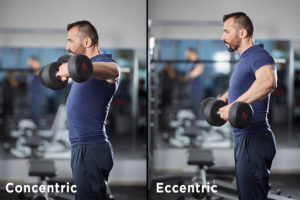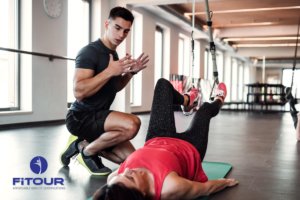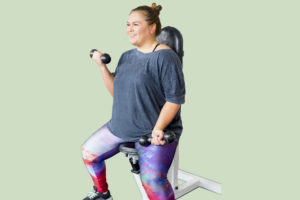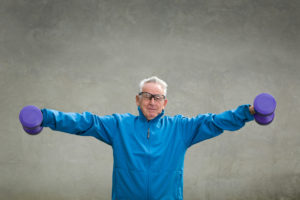Strength/Resistance
Posture Correction for Static Damage
The word posture tends to evoke the image of a schoolgirl standing perfectly erect with a book on her head. More accurately, static posture refers to the way in which a person holds his or her body or assumes certain positions, such as sitting, standing or sleeping. The cumulative effect of the time spent in certain positions can lead to prolonged static-posture damage to both the musculoskeletal and myofascial systems of the body.
Types of Periodization Training
Researchers have focused on three types of periodization training: linear periodization, block periodization and undulating periodization.
The Top 10 Corrective Exercises
How does corrective exercise programming fit into your business? Clients who are self-motivated to work hard are already star pupils. But what do you do when a client, because of injury, overuse patterns or some other type of dysfunction, can’t quite make it out of the gate? Many people want and need help with reducing pain in addition to meeting functional fitness goals. One goal dovetails into the other.
Frozen Shoulder? Identify Dysfunction
Our clients work hard to develop shoulders that are aesthetically pleasing, and learning how to spot shoulder impingement and other dysfunction is an integral part of the big somatic “picture.”
Fit to Travel: Exercises for Seniors
Programming exercises for seniors is more important than ever, especially now that travel is opening up again, but your clients may not have kept up with their workouts over this last year. Here are some great ways to prepare your active agers for more adventure.
5 Eccentric-Training Controversies, Resolved
This column will review the results of several investigative studies on controversial topics related to eccentric training.
Not Training to Muscle Failure May Enhance Muscle Endurance
Researchers found that not performing repetitions to failure may be more effective at increasing muscle size and endurance in untrained individuals.
Leverage Your Expertise With Suspension Fitness
As a fitness professional, you can leverage your expertise by incorporating suspension fitness into your overall training programs.
Strength Training: Should You Mix It Up?
A study published recently found that varying exercise selection increased motivation to train and produced equivalent improvements in muscular adaptations.
Tapering for Resistance Training: Less Is More!
Endurance athletes have used tapering for years; now there’s evidence that exercise enthusiasts and strength and power athletes can benefit from tapering phases in their resistance training (RT) programs. So, is tapering right for your clients? And when it comes to RT, can less work lead to more success? Here’s what the research tells us.
Periodization for Maximizing Hypertrophy
Much of the periodization literature to date has centered on the strength outcomes and sports performance of athletes striving to balance the needs of practice, conditioning and competition (Bartolomei et al. 2014). But many recreationally active clients seek to gain muscle size in personal training sessions, and few studies have evaluated whether a periodization model should be used in a hypertrophy-focused resistance training program for these fitness enthusiasts. This article highlights the best research available to help answer an important question: Should you periodize a client’s RT plan to maximize skeletal muscle hypertrophy?
Women and Strength Training
Women do not respond to weight training the same way men do. University of New South Wales researchers in Sydney conducted a comprehensive search of the literature on resistance training and found only 24 randomized controlled studies that focused exclusively on women. Lead study author Amanda “Mandy” D. Hagstrom, PhD, lecturer in exercise science at UNSW Medicine, said, “I was surprised. I knew there wouldn’t be many [studies], but I thought there’d be more than that.” The selected studies included almost 1,000 women.
Training Loads for Women Over 40
Personal trainers often have female clients over the age of 40 who have similar complaints about losing muscle mass and gaining body fat. Although these changes aren’t unexpected and can be a normal part of the aging process, they are not inevitable. In fact, the right resistance-training program can positively affect body composition by reducing fat, maintaining and building muscle, and increasing strength in this population.
Gender Equality Among Spotters
A spotter’s gender does not influence bench press performance during a 1-RM testing protocol, according to a 2019 report in the Journal of Strength and Conditioning Research (2019; doi: 10.1519/JSC.0000000000003156) This is true whether the weightlifter is male or female.
Best Focal Strategy for Weightlifting
The mental aspect of strength training is often given short shrift, but now a systematic review has analyzed relevant research to determine which most benefits weightlifting performance: focusing externally on the intended weightlifting result, focusing internally on the body or having no specific focus.
HIIT or CWT: Does Sequence Matter?
A new study, conducted under the leadership of IDEA author and presenter Len Kravitz, PhD, compared cardiovascular and metabolic responses to two exercise protocols: (1) six bouts of high-intensity interval training (HIIT) followed by three rounds of circuit weight training (CWT) and (2) CWT rounds interspersed with HIIT bouts. Fourteen trained young men (ages 25.7 ± 4.4) participated in the study, completing each of the two programs 3 days apart.
Resistance Training and Weight Loss
Did you know that resistance training does much more than build strong muscles and bones? Research in the past few years has confirmed that lifting weights changes your metabolism in ways that improve health and well-being. That’s good news for people with type 2 diabetes, high blood pressure, obesity and high cholesterol levels.
NSCA Releases Older-Adult Resistance Training Position Statement
Noting that 1 in 5 Americans will be over 65 by 2030 and that skeletal mass, strength and functional loss represent health risks, the National Strength and Conditioning Association has released its first position stand on older-adult resistance training.
Building Muscle Mass at Any Age
Here’s motivating news for older adults and those who train them. New research shows that older men, even in their 80s, can build muscle mass regardless of training background.
Presence of Spotter Improves Bench Press Performance
New research shows that the presence of a spotter during bench press training is enough to improve training performance by reducing perceived exertion and enhancing feelings of self-efficacy. Leeds Beckett University researchers from the Centre for Human Performance in Leeds, England, conducted the study to better understand why exercisers perform better in the presence of personal
trainers, coaches or training partners.



















